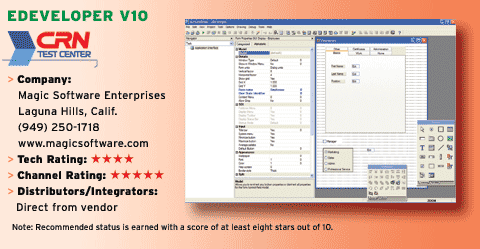Borland Says Goodbye to IDE, Refocuses on ALM
Currently, Borland still plans to enhance some of the core libraries to work with the .Net 2.0 framework.
The move affects thousands of applications, so solution providers should suggest that clients reassess those systems running with Borland components and built with Borland compilers.
CRN Test Center engineers recommend that applications that depend on Borland libraries at some point should be extended using service-oriented architectures or with other integration techniques. SOA, for instance, can provide a safe buffer by insulating these applications from other systems while allowing developers to slowly retire or migrate them.
Though more expensive, converting or re-engineering these applications are options as well, especially for .Net applications using third-party vendors that sell Borland and Visual Studio components. Another option is to manually convert Delphi and C++ applications into RealBasic. Until Feb. 28, Real Software is offering a free copy of Real-Basic 2006 for Windows with six months of free updates.
At first glance, Borland Developer Studio (BDS) 2006 still preserves many of Borland's classic IDE qualities. However, to maintain a consistent look and feel, Borland departed from its various IDE styles and merged each development tool with a cohesive set of similar features. Even when installing a single tool, Borland kept the BDS look, so seasoned Borland developers will need to get used to its structural changes. However, developers have the option to arrange BDS around a C++ personality.
For those new to Borland, Test Center engineers suggest not wasting time with the help links on the main page because they are a bit confusing. Borland linked some of its Web site content directly to some of the help links through its main page, which was distracting. CodeGuard now is better integrated with BDS, allowing C++ developers to catch runtime memory bugs and function failure errors on multithreaded applications. BDS arrives with Dinkumware runtime C++ libraries, which include the standard template library. For new programmers, BDS also provides the standard C and C++ libraries, including how-to guides on using functions and classes on the library.
Despite Microsoft's emphasis on .Net and setting aside the old Win32 API, Borland is still keeping Win32 alive. Since most of its customers are maintaining many Win32-based systems, Borland is still enhancing its Visual Component Library.
BDS arrives with an object mapping framework called Enterprise Core Object (ECO), which helps architects and developers design applications by mapping database structures to C# or Delphi .Net objects. In addition to avoiding writing SQL code, ECO allows developers to build UML-class diagrams and UML-state machine diagrams, which are carried through runtime. This framework depicts code structure and code behavior visually.
Borland follows a two-tier distribution model for channel partners. The reseller levels are aimed at VARs, while the solution provider levels are aimed at developers. Training costs are broken down as no charge for Resellers, $3,000 annually for Strategic Solution Partners and $1,000 annually for Select Solution Partners. Strategic Resellers and both levels of Solution Partners are offered MDFs and co-marketing strategic planning support.
